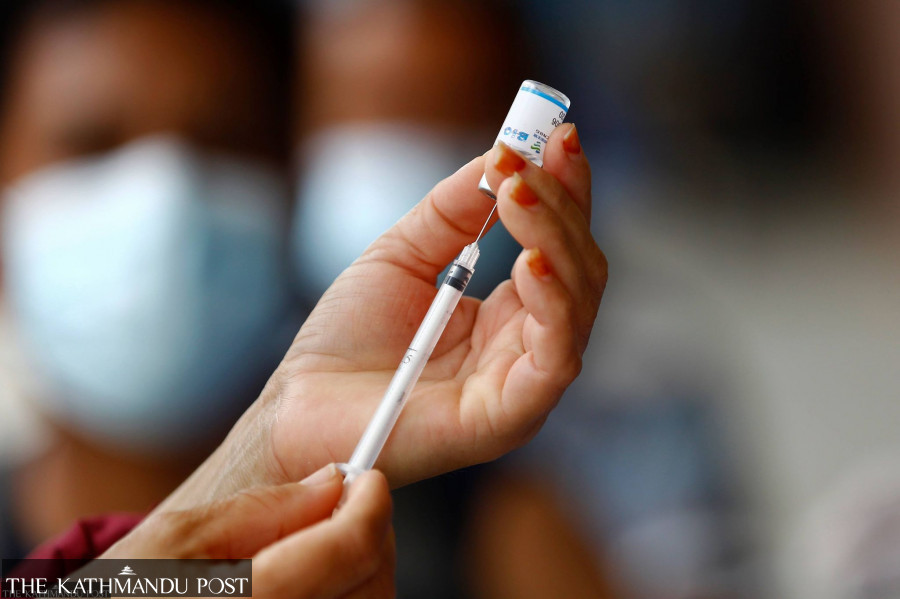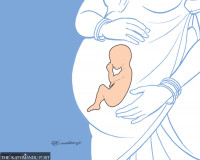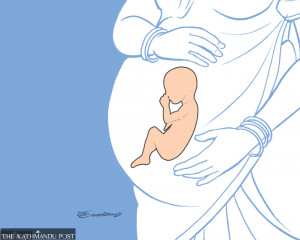Health
Data discrepancy: Ministry providing confusing numbers on vaccination
The daily updates on inoculation show more doses have been administered than the country has actually received, which experts say could affect Nepal’s vaccination target.
Arjun Poudel
Despite launching its vaccination drive against Covid-19 earlier than many countries, Nepal faced a setback after it could not procure the shots on a regular basis. But when doses started to trickle in, the country’s inoculation campaign gathered momentum.
The Health Ministry has been providing daily updates on its immunisation campaign on a regular basis. The ministry’s Covid-19 bulletin says 33.2 percent of the targeted population has received the first dose and 28.7 percent people have been fully immunised.
But there is a catch.
If Covid-19 immunisation data of the Ministry of Health and Population is anything to go by, more doses have been administered than the number of doses supplied to the country.
So far, 17,858,710 doses of Covid-19 vaccines manufactured by various companies have arrived in Nepal. According to the Health Ministry, 7,214,742 people so far have received the first dose and 6,238,001 people have been fully vaccinated.
Except for Janssen, the single-shot Johnson & Johnson vaccine, Nepal has used AstraZeneca and Vero Cell vaccines, both double-dose vaccines. The United States had supplied 1,534,850 Janssen doses under COVAX, an international vaccine-sharing scheme backed by the United Nations.
If the Johnson & Johnson vaccine is not counted, 4,703,151 people are fully vaccinated with other jabs, which means 9,406,302 doses (of double-shot vaccines) have been administered.
Altogether, 10,941,107 doses have been used to vaccinate people fully.
Going by the Health Ministry numbers, 18,155,849 doses have been used so far. This shows 298,259 doses more than the total doses arrived in the country.
Health Ministry officials say around one percent of the doses have gone to waste, which means over over 180,000 doses could have been wasted.
Officials could not provide any answer to the discrepancy in data.
Sagar Dahal, chief of the National Immunisation Programme under the Health Ministry, said that he could not say how the numbers differed.
“I have to ask my officials about it,” said Dahal. “I do not have an answer to this right now. No one has raised this question. Nor have we given a thought to this.”
Experts have for long called for maintaining data and record keeping on vaccines and vaccination. Authorities, however, have paid little attention to it.
At a time when questions have been raised whether the authorities are disseminating correct data on Covid-19 infections and deaths, such a mismatch in numbers of total doses received and total doses administered shows incompetence, experts say.
Dr Shyam Raj Upreti, coordinator of the Covid-19 Vaccine Advisory Committee, ruled out the Health Ministry’s intention to inflate the vaccination data, but admitted that the numbers are confusing.
“It’s a fact that more people have been vaccinated, but that does not mean that confusing data could be put out before the public,” Upreti told the Post. “Authorities must clear the confusion.”
Upreti said the whole vaccination campaign could be affected with such wrong and confusing data.
Of the total vaccine doses that have arrived in the country, 4,422,740 doses were AstraZeneca, 11,900,000 doses were Vero Cell, and 1,534,850 doses were Janssen.
Of the 4,422,740 doses of the AstraZeneca type vaccine, 2,448,000 were Covishield, manufactured by the Serum Institute of India. India had provided 1.1 million doses to Nepal under grant assistance. Nepal had bought 1 million doses of Covishield. COVAX had supplied 348,000 doses of the Covishield.
Besides, Bhutan supplied 230,000 doses, Japan provided 1,614,740 doses and the United Kingdom gifted 130,000 doses of AstraZeneca vaccine to Nepal.
China so far has supplied 11,900,000 doses of Vero Cell. Some of the doses were procured by Nepal besides what China provided under grant assistance.
What is even more confusing is that officials at the Health Ministry and local federal units claim that the second doses for those who have taken the first dose have already been secured.
As of Wednesday, 7,214,742 people have received their first dose. In that case, the ministry must have at least 7,214,742 doses in store. As health facilities are administering the first dose, there must be enough shots to be administered as second doses, if officials’ claim is to be believed. But this gives rise to a question how that is even possible when the number of doses administered so far has already exceeded the number of doses that have arrived in the country.
An official at the Department of Health Services said he was “not good at maths” to discuss the number of doses procured and administered, but he claimed that they have enough shots to give as the second dose to all who have received the first.
“We learnt a big lesson after we faced a Covishield crisis as those who had taken their first dose had to wait for months to get their second dose,” said the official who did not wish to be named. “So we are giving first doses by keeping the vaccine for second doses in stock.”
The government had administered Covishield to around 1.4 million people aged 65 and above in the second week of March after 1 million doses of the 2 million doses procured were supplied by India in February. The Serum Institute later expressed its inability to provide the remaining doses, putting the government in a fix.
The Health Ministry is aiming to inoculate at least 33 percent of the 30 million population before Dashain, which starts next week. For that, 9,900,000 people have to be fully vaccinated.
As the government has decided to vaccinate all Nepalis above 15 years of age, the total targeted population is around 21,600,000.
Officials admit that there is discrepancy in the daily updates provided by the ministry.
An official at the Health Ministry said the number of doses so far used stands at 13,452,743
Dr Samir Kumar Adhikari, joint spokesperson for the Health Ministry, said that he was also not in a position to shed light on the mismatch in the numbers of vaccines procured and administered.
“I cannot answer your question right now,” Adhikari told the Post. “I will let you know when I get the answer.”




 16.66°C Kathmandu
16.66°C Kathmandu














